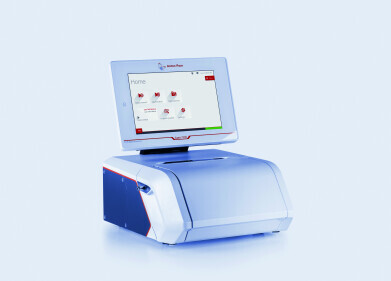Mass Spectrometry & Spectroscopy
Report on AFM system use to study the properties of Materials on the Nanoscale
Jul 18 2014
Dr Peter Dunstan is an Associate Professor in the Department of Physics at Swansea University and a member of the University’s Centre for Nanohealth. His research utilises state of the art techniques and instrumentation to increase the fundamental understanding of the structural, chemical, optical and electronic properties of materials on the nanoscale, and by doing so advance the future application of those materials.
Asked why AFM is an important technique in his research, Dr Dunstan said: “AFM based systems give us the opportunity of generating a clear understanding of the structure of the materials that we investigate. AFM can also offer us the opportunity to correlate this structural measurement with other characteristics. For instance, by coating an AFM probe with gold and utilising the interaction between the metallised tip and a sample, it allows us to exploit an optical antenna effect when the tip is illuminated by an externally focussed laser of a suitable wavelength. This arrangement allows us to simultaneously correlate an enhanced localised spectroscopic response from the sample, along with the normal AFM response, and in doing so advance the application of the AFM instrument in line with our research objectives.”
Dr Dunstan is well placed to comment on the advantages he sees in the NanoWizard® system. “One major aspect of the benefits of using JPK has been their ability to embrace our own research innovations and hence allow us to integrate our technology advances into the JPK instrument. This has allowed us to retain the advances we have made and integrate them onto the stable JPK AFM platform for improved performance. Also partnership with other companies has been important and is an area where JPK showed tremendous willing for cross-platform integration. Most recently, we published a paper in the Journal of Raman Spectroscopy on the use of TERS, tip-enhanced Raman spectroscopy, where we combined our JPK AFM and Renishaw Raman spectrometer to enhance lattice defect signatures in graphene.”
”It is important to mention we have benefited from the keen commitment of JPK staff to help us develop specialised adapted software approaches for our instrument when performing tip-enhanced spectroscopies and this has allowed us the precise control in the acquisition parameters that we require.”
Digital Edition
Lab Asia 31.2 April 2024
April 2024
In This Edition Chromatography Articles - Approaches to troubleshooting an SPE method for the analysis of oligonucleotides (pt i) - High-precision liquid flow processes demand full fluidic c...
View all digital editions
Events
Apr 28 2024 Montreal, Quebec, Canada
May 05 2024 Seville, Spain
InformEx Zone at CPhl North America
May 07 2024 Pennsylvania, PA, USA
May 14 2024 Oklahoma City, OK, USA
May 15 2024 Birmingham, UK


















